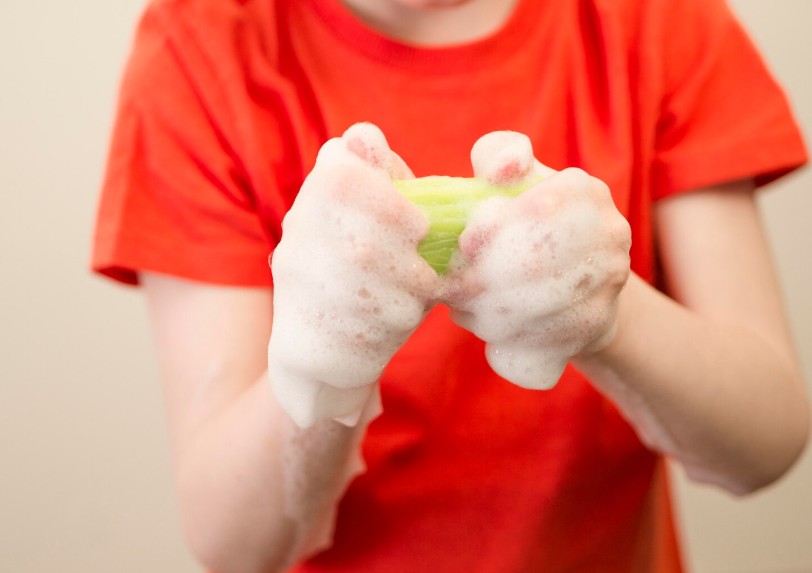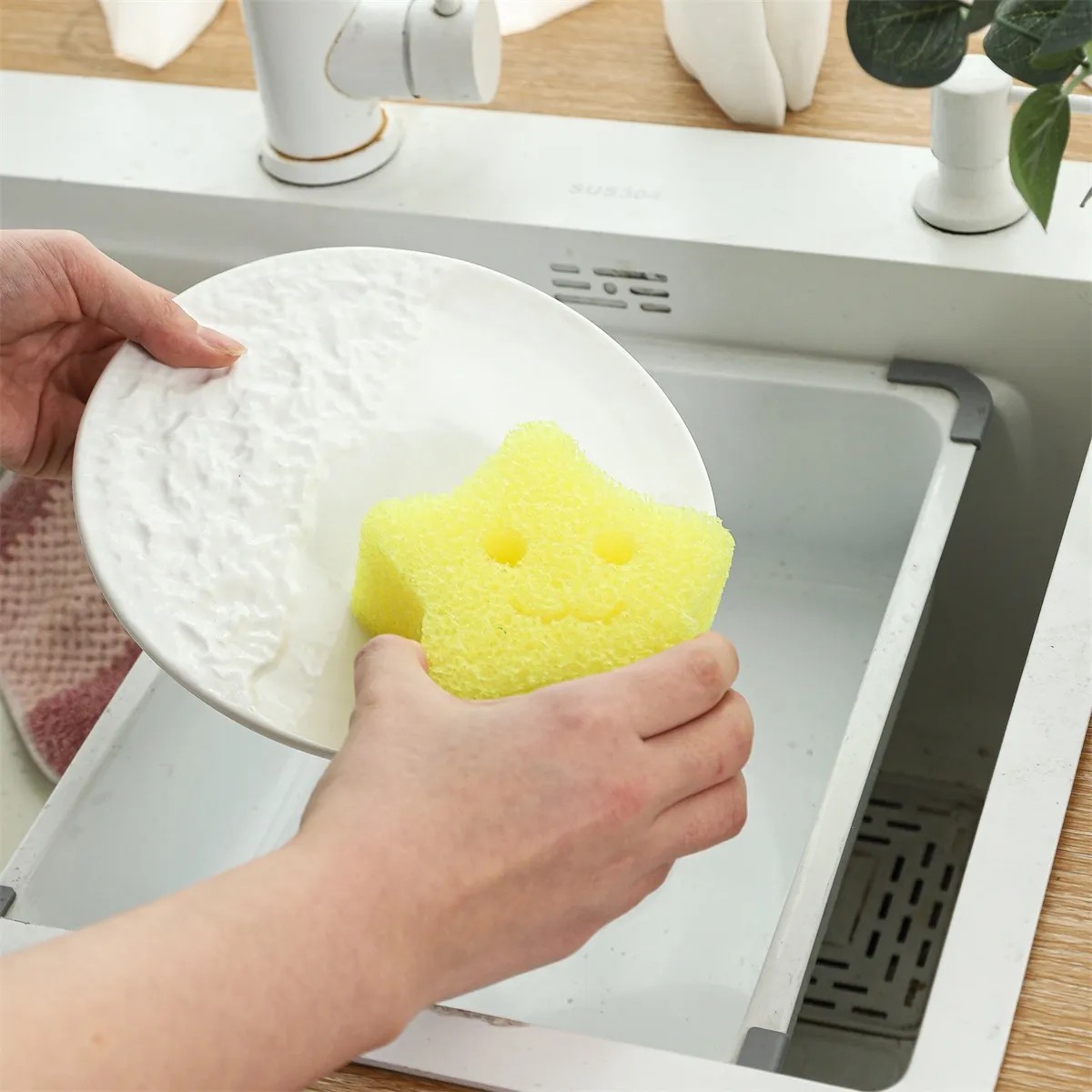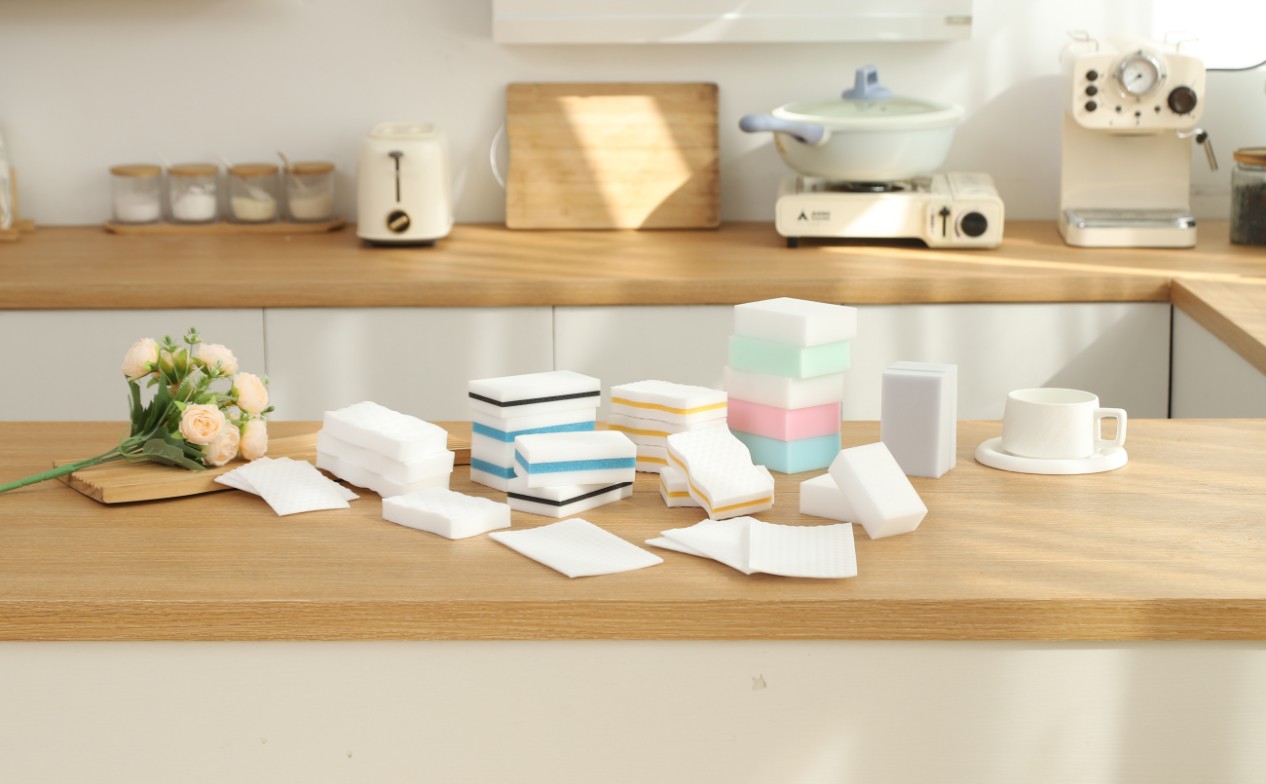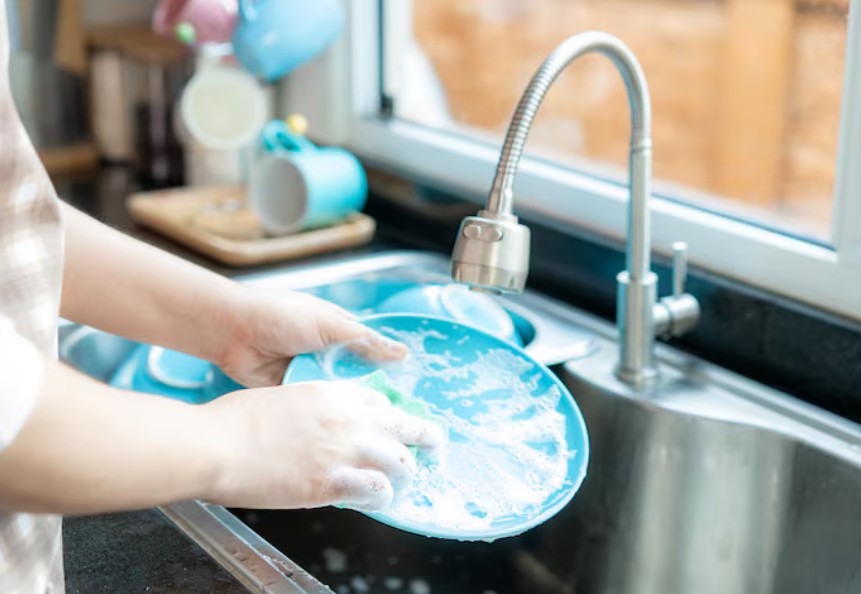Can Reusable Magic Erasers Outperform Disposable Ones Over Time
2025-10-03
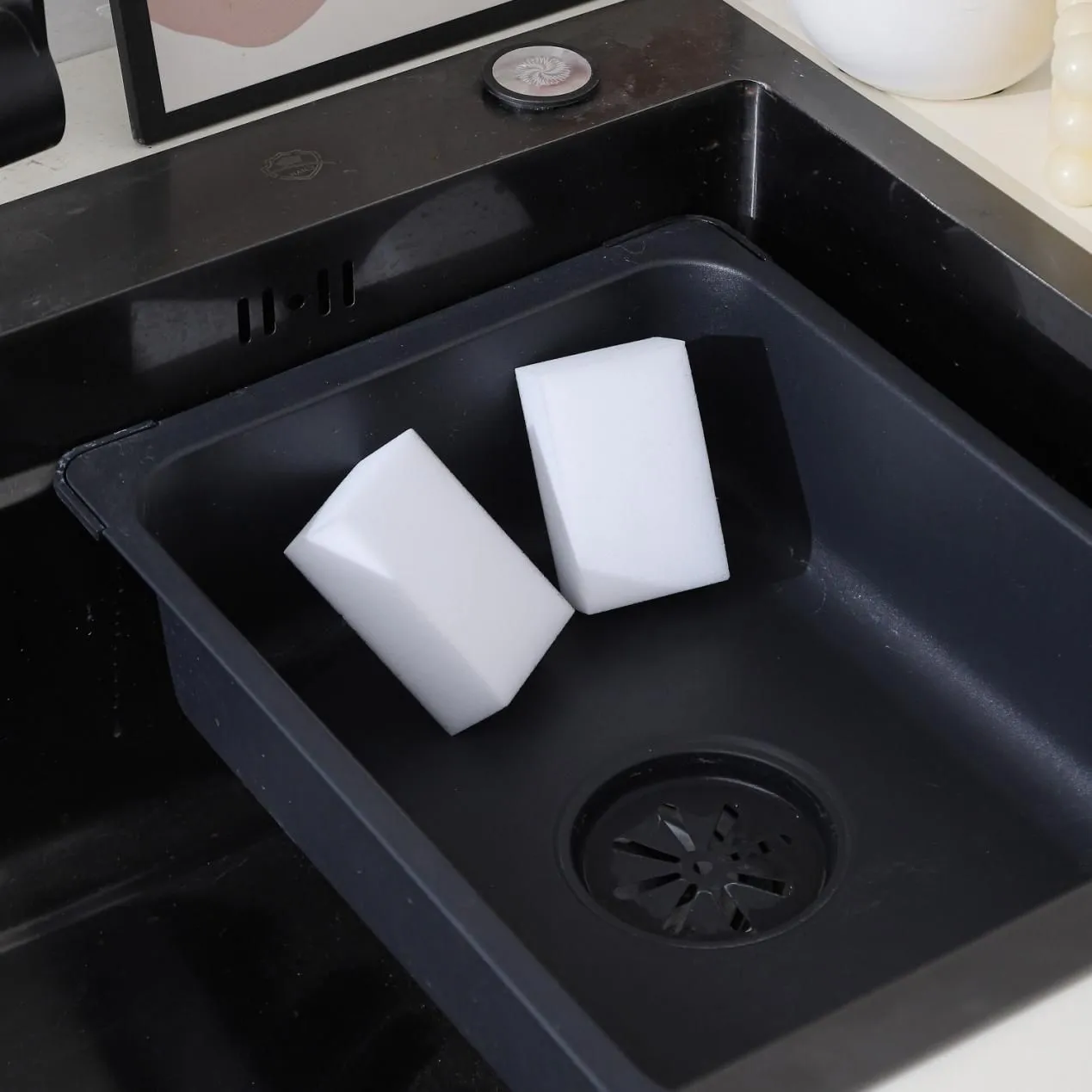
Magic erasers are everywhere now. You see them in homes, schools, hotels, and even in some industrial cleaning jobs. People like them because they can remove stains fast, without needing strong chemicals. When it comes to melamine foam products, you want to choose a company that knows the material inside out. FoamTech has been making these sponges for years. They use German foaming machines in their factories and keep tight control on quality. The company also works with both small and big buyers, offering OEM and private label service. That means you can get reliable products that also fit your market.
What Are the Key Differences Between Reusable and Disposable Magic Erasers?
Even though they look similar at first, reusable and disposable magic erasers are built differently. Knowing these differences helps you choose what works better for your own needs.
Material Composition and Structural Integrity
Reusable erasers are stronger. Many of them are made with extra layers like non-woven fabric or embossed textures that stop the foam from tearing too fast. This makes them last through more washes. A good example is the Embossed Melamine Sponge with Non-Woven Fabric, which keeps its shape after dozens of scrubs.
Disposable erasers are simpler. They’re usually just a single layer of melamine foam. That makes them cheaper, but they break down quickly, especially if you push too hard while scrubbing.
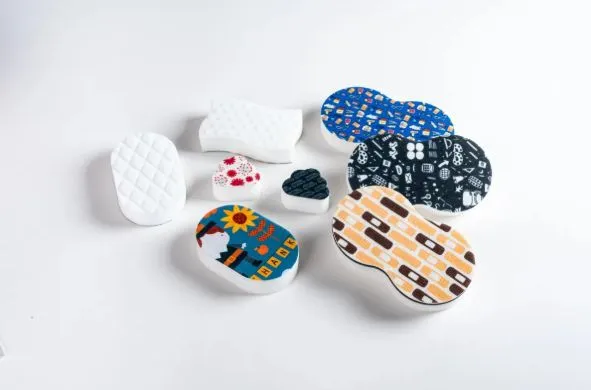
Surface Texture and Cleaning Efficiency
Disposable sponges work fast because their open-cell structure bites into dirt right away. The downside is they wear out fast too. Reusable types often have embossed or patterned surfaces that grab stains better while holding their form longer.
Both can give you that “wipe once and it’s clean” feeling. The real difference is how many times you can repeat that before the sponge crumbles.
Intended Use and Product Lifecycle
Disposable sponges are handy for one-time cleaning jobs or in places where hygiene is a must, like a hospital washroom. Reusable ones, however, are made to last. You can soak them, rinse them, and use them again and again.
How Does Cleaning Performance Compare Over Extended Use?
Performance over time is where reusable and disposable sponges really show their gap.
Abrasive Power on Various Surfaces
Both types can handle many materials: ceramics, plastics, tiles, glass, or even leather goods. For example, ceramic dishware or a bathtub cleans fine with either type. But reusable ones keep their abrasive power longer because of the way they are reinforced.
Consistency of Results After Multiple Uses
Reusable sponges hold their structure much better. As long as you dry them after each use, they don’t lose shape fast. Disposables, on the other hand, tend to get soft, lose density, and even crumble after just a few sessions.
Effectiveness on Stubborn Stains and Residue
Reusable sponges usually do a better job with old or greasy stains. Their embossed surface increases the contact area, so you don’t need to press too hard. That makes them both effective and safer on surfaces.
Is Cost Efficiency Better with Reusable Magic Erasers?
Cost is not just about the price tag you see when you buy. It’s about how many uses you can get before you need a replacement.
Long-Term Usage Versus Unit Price
Disposable sponges are cheaper per piece. But reusable ones often save more money because one sponge can last through many cleaning cycles.
Also, reusable sponges rinse clean with just water. This simple feature makes them even more cost-effective, because you don’t need to buy chemicals.
Replacement Frequency and Maintenance Requirements
Reusable models need only basic care. For example, if you soak them in white vinegar for about 15 minutes once a month, they stay fresh and safe to use. This simple step extends their lifespan a lot. Disposables, however, must be thrown away after one use.
Value Proposition for Commercial Versus Residential Use
In hotels, schools, or offices where cleaning is done daily, reusable types are the smarter choice. They reduce the number of orders needed and lower costs for staff time. At home, some people may still choose disposables just for convenience.
Do Reusable Magic Erasers Offer Greater Environmental Benefits?
Many buyers today think about sustainability when choosing cleaning tools. Reusable sponges clearly have an advantage here.
Waste Reduction and Sustainability Metrics
Using one sponge for dozens of cycles means fewer items end up in landfills. These products also meet EU REACH safety rules, so they don’t contain harmful chemicals like phthalates or formaldehyde.
Packaging, Disposal, and Recycling Considerations
Disposable sponges often come in plastic wrap, which adds extra waste. Reusable ones usually come in bulk packs, cutting down on packaging waste.
Impact of Manufacturing Processes on Carbon Footprint
Some reusable sponges are made with vacuum foaming technology. This makes pore uniformity reach about 98%, which saves energy during production. Over time, producing fewer but longer-lasting sponges lowers overall carbon output.
How Durable Are Embossed Melamine Sponges with Non-Woven Fabric?
Durability is where reusable sponges shine most. They are made to stand up to pressure and keep going.
Resistance to Wear During Repetitive Cleaning Cycles
With non-woven fabric layers, these sponges resist tearing even when used on rough surfaces. This is useful in industrial settings where cleaning is heavy and frequent.
Structural Stability in Wet and Dry Conditions
Some sponges are treated to resist water damage. That means they stay stable whether stored dry or soaked in water. They don’t fall apart just because of moisture.
Can Mini Size Embossed Sponges Maintain Functionality in Tight Spaces?
Not all cleaning jobs are large. Small tools, like Mini Size Embossed Melamine Sponge, can be just as important, especially for corners or delicate items.
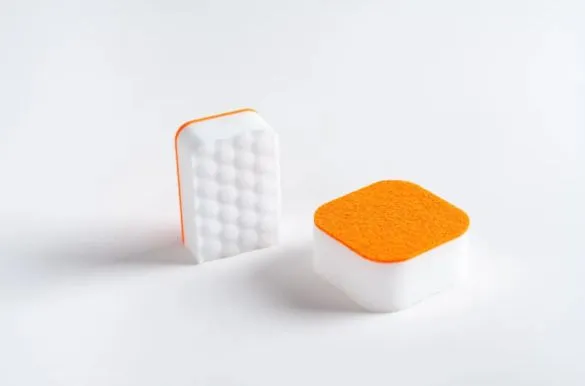
Precision Cleaning for Small or Delicate Surfaces
Mini embossed sponges are great for small spots, like between tiles, in the gaps of keyboards, or on carved ceramic pieces.
Ergonomic Handling and Control During Use
Because of their size, they are easy to hold and control. You can press gently where needed without risk of scratching sensitive surfaces.
FAQ
Q1: How do I make a reusable magic eraser last longer?
A: Dry it after each use, avoid harsh cleaning agents, and soak it in white vinegar once a month.
Q2: Do embossed surfaces really improve cleaning?
A: Yes. The pattern increases contact and helps scrub away tougher grime.
Q3: Are mini reusable sponges safe for delicate tools or electronics?
A: Yes. Their small size and easy control make them good for precise cleaning.
Magic erasers are everywhere now. You see them in homes, schools, hotels, and even in some industrial cleaning jobs. People like them because they can remove stains fast, without needing strong chemicals. When it comes to melamine foam products, you want to choose a company that knows the material inside out. FoamTech has been making these sponges for years. They use German foaming machines in their factories and keep tight control on quality. The company also works with both small and big buyers, offering OEM and private label service. That means you can get reliable products that also fit your market.
What Are the Key Differences Between Reusable and Disposable Magic Erasers?
Even though they look similar at first, reusable and disposable magic erasers are built differently. Knowing these differences helps you choose what works better for your own needs.
Material Composition and Structural Integrity
Reusable erasers are stronger. Many of them are made with extra layers like non-woven fabric or embossed textures that stop the foam from tearing too fast. This makes them last through more washes. A good example is the Embossed Melamine Sponge with Non-Woven Fabric, which keeps its shape after dozens of scrubs.
Disposable erasers are simpler. They’re usually just a single layer of melamine foam. That makes them cheaper, but they break down quickly, especially if you push too hard while scrubbing.

Surface Texture and Cleaning Efficiency
Disposable sponges work fast because their open-cell structure bites into dirt right away. The downside is they wear out fast too. Reusable types often have embossed or patterned surfaces that grab stains better while holding their form longer.
Both can give you that “wipe once and it’s clean” feeling. The real difference is how many times you can repeat that before the sponge crumbles.
Intended Use and Product Lifecycle
Disposable sponges are handy for one-time cleaning jobs or in places where hygiene is a must, like a hospital washroom. Reusable ones, however, are made to last. You can soak them, rinse them, and use them again and again.
How Does Cleaning Performance Compare Over Extended Use?
Performance over time is where reusable and disposable sponges really show their gap.
Abrasive Power on Various Surfaces
Both types can handle many materials: ceramics, plastics, tiles, glass, or even leather goods. For example, ceramic dishware or a bathtub cleans fine with either type. But reusable ones keep their abrasive power longer because of the way they are reinforced.
Consistency of Results After Multiple Uses
Reusable sponges hold their structure much better. As long as you dry them after each use, they don’t lose shape fast. Disposables, on the other hand, tend to get soft, lose density, and even crumble after just a few sessions.
Effectiveness on Stubborn Stains and Residue
Reusable sponges usually do a better job with old or greasy stains. Their embossed surface increases the contact area, so you don’t need to press too hard. That makes them both effective and safer on surfaces.
Is Cost Efficiency Better with Reusable Magic Erasers?
Cost is not just about the price tag you see when you buy. It’s about how many uses you can get before you need a replacement.
Long-Term Usage Versus Unit Price
Disposable sponges are cheaper per piece. But reusable ones often save more money because one sponge can last through many cleaning cycles.
Also, reusable sponges rinse clean with just water. This simple feature makes them even more cost-effective, because you don’t need to buy chemicals.
Replacement Frequency and Maintenance Requirements
Reusable models need only basic care. For example, if you soak them in white vinegar for about 15 minutes once a month, they stay fresh and safe to use. This simple step extends their lifespan a lot. Disposables, however, must be thrown away after one use.
Value Proposition for Commercial Versus Residential Use
In hotels, schools, or offices where cleaning is done daily, reusable types are the smarter choice. They reduce the number of orders needed and lower costs for staff time. At home, some people may still choose disposables just for convenience.
Do Reusable Magic Erasers Offer Greater Environmental Benefits?
Many buyers today think about sustainability when choosing cleaning tools. Reusable sponges clearly have an advantage here.
Waste Reduction and Sustainability Metrics
Using one sponge for dozens of cycles means fewer items end up in landfills. These products also meet EU REACH safety rules, so they don’t contain harmful chemicals like phthalates or formaldehyde.
Packaging, Disposal, and Recycling Considerations
Disposable sponges often come in plastic wrap, which adds extra waste. Reusable ones usually come in bulk packs, cutting down on packaging waste.
Impact of Manufacturing Processes on Carbon Footprint
Some reusable sponges are made with vacuum foaming technology. This makes pore uniformity reach about 98%, which saves energy during production. Over time, producing fewer but longer-lasting sponges lowers overall carbon output.
How Durable Are Embossed Melamine Sponges with Non-Woven Fabric?
Durability is where reusable sponges shine most. They are made to stand up to pressure and keep going.
Resistance to Wear During Repetitive Cleaning Cycles
With non-woven fabric layers, these sponges resist tearing even when used on rough surfaces. This is useful in industrial settings where cleaning is heavy and frequent.
Structural Stability in Wet and Dry Conditions
Some sponges are treated to resist water damage. That means they stay stable whether stored dry or soaked in water. They don’t fall apart just because of moisture.
Can Mini Size Embossed Sponges Maintain Functionality in Tight Spaces?
Not all cleaning jobs are large. Small tools, like Mini Size Embossed Melamine Sponge, can be just as important, especially for corners or delicate items.

Precision Cleaning for Small or Delicate Surfaces
Mini embossed sponges are great for small spots, like between tiles, in the gaps of keyboards, or on carved ceramic pieces.
Ergonomic Handling and Control During Use
Because of their size, they are easy to hold and control. You can press gently where needed without risk of scratching sensitive surfaces.
FAQ
Q1: How do I make a reusable magic eraser last longer?
A: Dry it after each use, avoid harsh cleaning agents, and soak it in white vinegar once a month.
Q2: Do embossed surfaces really improve cleaning?
A: Yes. The pattern increases contact and helps scrub away tougher grime.
Q3: Are mini reusable sponges safe for delicate tools or electronics?
A: Yes. Their small size and easy control make them good for precise cleaning.


